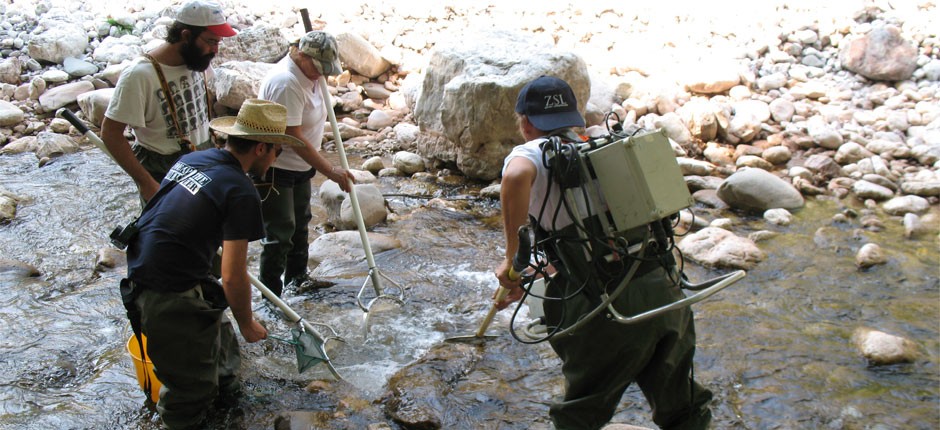Physico-chemical quality elements and ecological status. Sampling and analysis.
The WFD requires the ecological status classification of surface water bodies by using biological quality elements supported by hydromorphological and physico-chemical ones.
The physico-chemical quality plays a crucial role in the estimation of the ecological status as well in the possibility of applying restoration measures, since it is required for the determination of high and good ecological status. It is determined by abiotic elements, such as the physicochemical conditions and the concentration of nutrient compounds.
Within monitoring programs, physicochemical parameters, e.g. water temperature, pH, dissolved oxygen, conductivity are measured in-situ using portable field instruments. At the same time, water samples are collected for the determination of nutrients.
Depending on the purpose of monitoring, additional parameters that are being determined are: major ions, dissolved organic carbon, silicate, heavy metals and organic micropollutants. Eventually, suspended matter is also collected for the analysis of organic matter, C, N and P, major and trace elements, organic micropollutants and of its mineralogical composition.
The methodology of nutrient sampling, analysis and classification is described below:
In the field
Water samples are collected in polyethylene bottles which had previously been cleaned with diluted HCl. 1% of HgCl2 solution is added to each bottle as a preservative (1 ml/l of sample). Samples are kept cool and transferred as quickly as possible to the laboratory.
In the laboratory
After filtration through 0.45 μm pore size membrane filters, nitrates, nitrites, ammonium and orthophosphate are determined. Nitrites, ammonium and orthophosphate are determined photometrically. For higher concentrations, the spectrophotometer MERCK-FARO 300 is used and for lower ones, the automatic nutrient analyzer Bran+Luebbe II Auto Analyzer and the Perkin-Elmer spectrophotometer are used. Concerning nitrates, Ion Chromatography is applied for higher concentrations and the automatic nutrient analyzer is used for lower concentrations.
Using the Merck-FARO 300, the determination of ΝΗ4+ is carried out according to Berthelot’s Reaction (Merck Test Kits No114752), the determination of ΝΟ2– is performed according to Griess ‘Reaction (Merck Test Kits No 114776) and PO43- are determined using the method of phosphomolybdenum blue (PMB) (Merck Test Kits No114729). Concerning the automatic nutrient analyzer, the methodology described by Shinn, 1941, Stickland and Parsons, 1968 for nitrate and nitrite, and Murphy and Riley, 1962, for phosphate are used respectively. For lower ΝΗ4+ concentrations, the Koroleff method is applied (Koroleff F.,1969). The detection limits are: for N-ΝΟ3–>0.001 mg/l, for N-ΝΟ2–>0.0002 mg/l, for P- PO43->0.001 mg/l and for N- ΝΗ4+>0.0005 mg/l.
Nutrient status classification
For the assessment of nutrient status, the Nutrient Classification System (NCS) (Skoulikidis et al., 2006) is being applied. More recently an updated nutrient classification system (GR-NCS) has been developed (Laschou, 2010; Laschou et al., in prep.).
